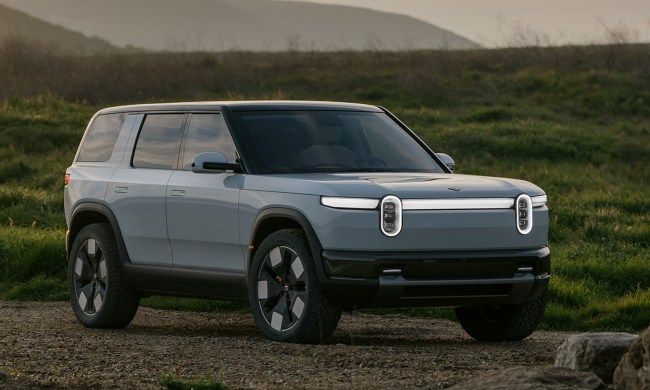
You may be familiar with the concept of wireless charging for your phone — but what if you could wirelessly charge your electric car? Well, it seems like that concept may not be all that far-fetched. In fact, Tesla chief designer Franz von Holzhausen announced in a video with Jay Leno about the Cybertruck that Tesla is working on an inductive charger for the home.
Now, of course, this is Tesla we’re talking about. The company noting that it’s “working” on something like this could mean that it’s coming out this year, coming out in 10 years, or really, coming out never.
But regardless of whether Tesla builds the first wireless chargers for cars or not, the concept could eventually be coming to the mainstream.
How does induction car charging work?
Charging a car through inductive charging works pretty much the same as wirelessly charging a phone.
Wireless charging in general uses electromagnetic induction to transmit electrical current. Basically, there’s a transmitter (a charging pad) with a magnetic coil, and a receiver (in this case, built into the bottom of your car), with another magnetic coil. When the two align, electric current is transmitted to the receiver, and charging begins.

Actually implementing a transmitter and receiver is a little more complicated. In a home setup, you’d need a large pad that you would park over. Perhaps, it could be placed in your garage or carport. It would need to be connected to your home’s power, and could generate different amounts of charge depending on whether or not it’s simply plugged in or actually wired into your home.
The other side of that is the fact that your car will need a receiver. Right now, there are no EVs that are publicly available with an inductive charging receiver built into them. Once this wireless charging tech starts rolling out, EV manufacturers will need to start building it into their cars — and hopefully, they’ll standardize it.
Could this really make EV charging more convenient?
Theoretically! Of course, much of that comes down to adoption and implementation. Assuming it does roll out in some consumer format, there could be a day when you never have to plug in your car when you get home.

At scale, this type of charging ecosystem could also put range anxiety behind us. Imagine if parking lots implemented it on a much wider scale than current charging stations, allowing drivers to simply pull into a parking spot to start charging. This future is a long way off, if it ever happens, but even if we get halfway there, car charging could end up being much more convenient.
Even more convenient, but even more outrageously expensive and unlikely to happen? Wireless charging roads. If that were to become common, you’d never run out of juice. But again, that’s incredibly unlikely to happen — at least any time soon.
What about charging speeds?
They’re faster than you might assume. When backed by high-power inductive transmitters, and receivers that support fast charging, charging wirelessly could be very quick indeed.
A number of companies have started working on the tech for wirelessly charging electric cars, with some success. In fact, some of these companies have seen charging speeds of up to 20 kilowatts — which is equivalent to a Level 2 charger today. Theoretically, those speeds could be even faster, too.

Of course, there are still a lot of questions that need answering. Notably, it remains to be seen how expensive a home system like this would be — and if manufacturers can maintain a reasonable price while delivering a reasonable charging speed. Like wired charging solutions today, it’s likely that faster wireless charging stations will cost more. For many people, the only thing that will matter is the ability to top up an EV after a day’s worth of errands and driving to and from work. That may not require very fast speeds. Others, however, will likely want to ensure that they can fully charge relatively quickly — especially those who drive longer distances on a day-to-day basis.



